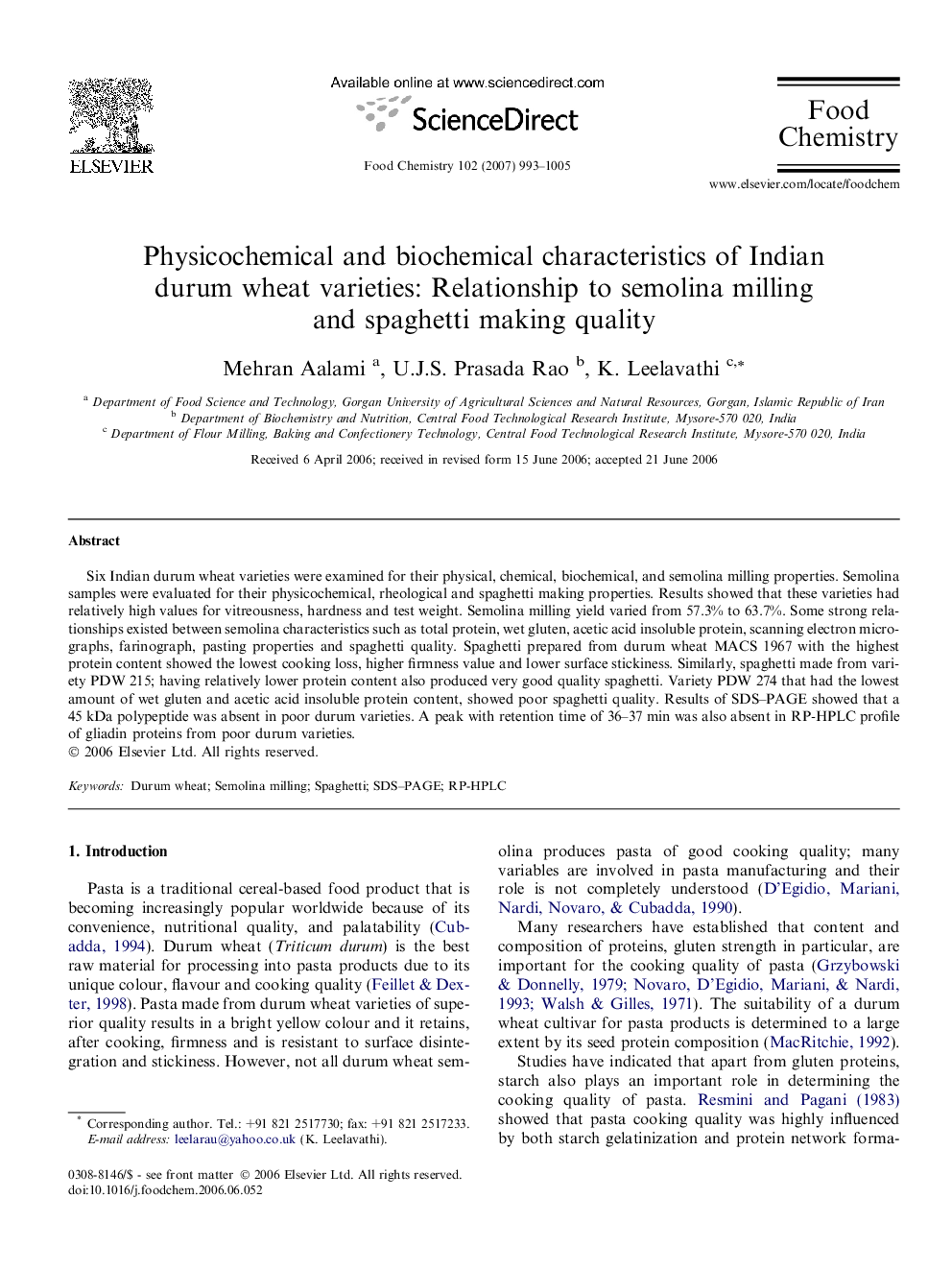| Article ID | Journal | Published Year | Pages | File Type |
|---|---|---|---|---|
| 1189757 | Food Chemistry | 2007 | 13 Pages |
Six Indian durum wheat varieties were examined for their physical, chemical, biochemical, and semolina milling properties. Semolina samples were evaluated for their physicochemical, rheological and spaghetti making properties. Results showed that these varieties had relatively high values for vitreousness, hardness and test weight. Semolina milling yield varied from 57.3% to 63.7%. Some strong relationships existed between semolina characteristics such as total protein, wet gluten, acetic acid insoluble protein, scanning electron micrographs, farinograph, pasting properties and spaghetti quality. Spaghetti prepared from durum wheat MACS 1967 with the highest protein content showed the lowest cooking loss, higher firmness value and lower surface stickiness. Similarly, spaghetti made from variety PDW 215; having relatively lower protein content also produced very good quality spaghetti. Variety PDW 274 that had the lowest amount of wet gluten and acetic acid insoluble protein content, showed poor spaghetti quality. Results of SDS–PAGE showed that a 45 kDa polypeptide was absent in poor durum varieties. A peak with retention time of 36–37 min was also absent in RP-HPLC profile of gliadin proteins from poor durum varieties.
